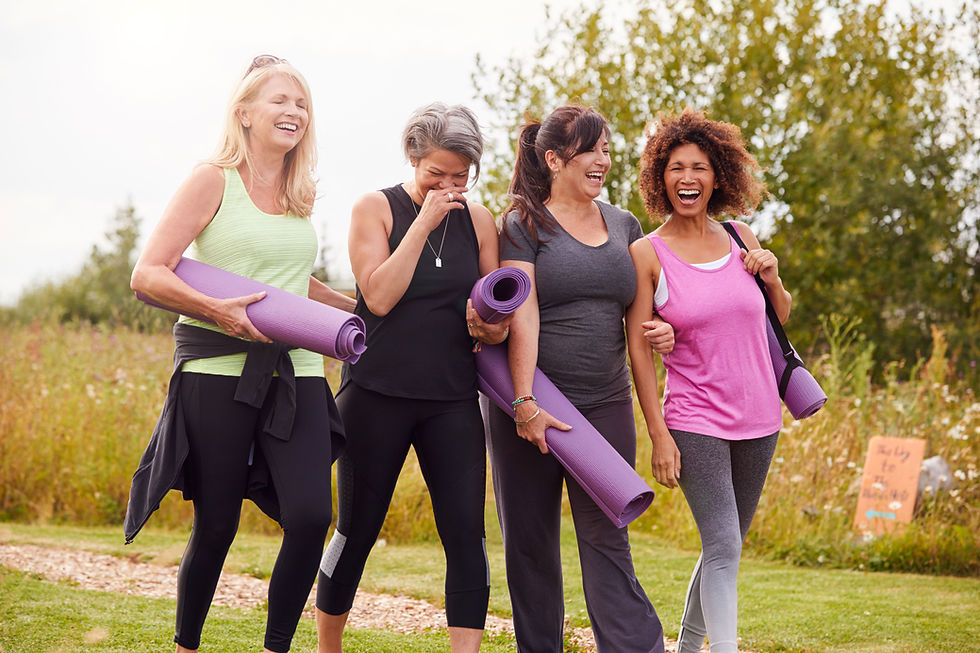What is Barre?
- dianasg1966
- Jan 22, 2024
- 2 min read
Updated: Mar 15

Barre classes combines elements of Ballet, Pilates, Yoga and Strength Training.
It is a full body workout that emphasises balance, strength, flexibility, posture and endurance, with exercises that often include isometric hold, tiny pulses and high repetition to engage muscles deeply.
There are many different types of barre classes, some more fast-paced with an emphasis on cardio and others which focus on form and technique with slower transitions between movements. I have trained with 2 different schools of Barre and have modified the exercises to suit women over 40.
Barre workouts are popular for their ability to tone and sculpt the body, improve flexibility, and enhance overall strength without putting too much strain on the joints.
Barre focuses on strength, flexibility, and endurance with low-impact exercises. The strength and toning from Barre can help build the muscles needed to enhance overall athletic performance.
Barre is suitable for people of all ages, fitness levels and backgrounds as it should be modified to accommodate different abilities.
The precise, sculpting effects of barre can create a dancer’s physique without any need for a dance background or ability, which is why it has become so popular since its inception in the 1960s.
Key Benefits of Barre:
1. Tones and Strengthens Muscles: Barre targets both large and small muscle groups, helping to sculpt and define the body, particularly the legs, glutes, arms, and core.
2. Improves Flexibility: The stretching and lengthening movements can increase flexibility and improve range of motion, which is beneficial for overall mobility and injury prevention.
3. Low-Impact: Barre is gentle on the joints, making it a great option for people with joint issues, beginners, or those recovering from injury. It delivers effective strength training without the high-impact stress of activities like running.
4. Boosts Posture: Many exercises focus on core strength and alignment, which can help improve posture and reduce back and neck strain.
5. Increases Core Strength: Barre workouts heavily engage the core muscles, helping to build stability, balance, and overall strength.
6. Enhances Balance and Coordination: The precise movements and poses practiced in barre challenge your balance, helping to improve coordination and body awareness.
7. Improves Mental Focus: Because Barre requires concentration and mindful movements, it can enhance mental focus, reduce stress, and improve overall well-being.
8. Low to Moderate Intensity: While challenging, Barre provides a moderate-intensity workout that can be sustained for longer periods, making it suitable for people at different fitness levels.
9. Full-Body Workout: Barre incorporates elements from ballet, yoga, Pilates, and strength training, providing a comprehensive workout that targets all areas of the body.
10. Improves Endurance: The high-repetition, isometric movements build muscular endurance over time, helping to increase stamina in other physical activities.
Lotte Berk was the first to develop this - and to combine rehabilitative work - into a formal programme. Before Lotte, there was no formal ‘organised’ exercise available for women. Lotte created what we now know as barre largely out of her own vanity to maintain her ballet physique following retirement. And we don’t blame her!







Comments